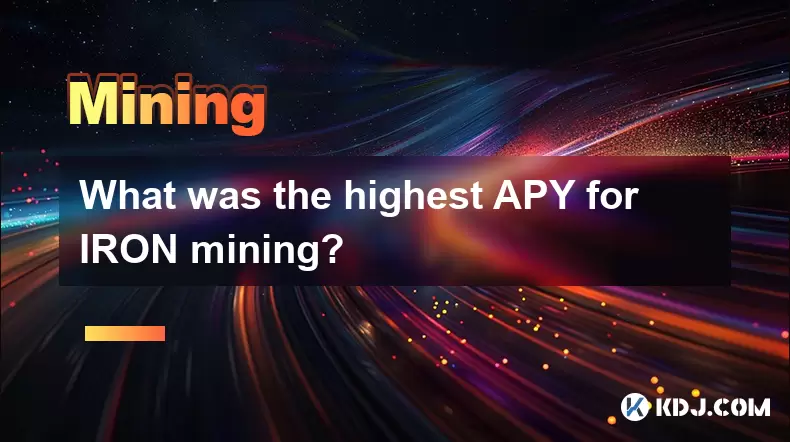-
 Bitcoin
Bitcoin $115000
0.12% -
 Ethereum
Ethereum $3701
4.50% -
 XRP
XRP $3.081
2.99% -
 Tether USDt
Tether USDt $0.0000
-0.01% -
 BNB
BNB $767.9
1.45% -
 Solana
Solana $169.5
3.13% -
 USDC
USDC $0.9999
0.01% -
 Dogecoin
Dogecoin $0.2106
4.30% -
 TRON
TRON $0.3334
1.62% -
 Cardano
Cardano $0.7564
2.54% -
 Stellar
Stellar $0.4165
0.76% -
 Hyperliquid
Hyperliquid $38.75
0.25% -
 Sui
Sui $3.593
3.00% -
 Chainlink
Chainlink $17.08
3.59% -
 Bitcoin Cash
Bitcoin Cash $573.6
4.35% -
 Hedera
Hedera $0.2508
-0.84% -
 Avalanche
Avalanche $23.07
6.46% -
 Ethena USDe
Ethena USDe $1.001
-0.02% -
 Litecoin
Litecoin $120.8
8.17% -
 UNUS SED LEO
UNUS SED LEO $8.943
-0.32% -
 Toncoin
Toncoin $3.400
-5.60% -
 Shiba Inu
Shiba Inu $0.00001255
1.54% -
 Uniswap
Uniswap $9.908
6.32% -
 Polkadot
Polkadot $3.718
2.10% -
 Monero
Monero $303.0
-0.74% -
 Dai
Dai $0.9999
-0.02% -
 Bitget Token
Bitget Token $4.392
0.91% -
 Cronos
Cronos $0.1403
6.31% -
 Pepe
Pepe $0.00001076
1.13% -
 Aave
Aave $267.2
1.80%
A complete analysis of GPU hardware for cryptocurrency mining
For crypto mining, choose GPUs with high VRAM and hash rates, but consider power consumption and cooling to maintain profitability and prevent overheating.
Mar 31, 2025 at 11:43 am

Understanding GPU Hardware Requirements for Crypto Mining
Cryptocurrency mining, particularly for proof-of-work (PoW) algorithms, heavily relies on powerful Graphics Processing Units (GPUs). These GPUs excel at parallel processing, crucial for solving the complex mathematical problems required to mine many cryptocurrencies like Ethereum (before the Merge), Ravencoin, and Ergo. Choosing the right GPU involves considering several key factors to maximize profitability and efficiency.
Key Factors Influencing GPU Mining Performance
The performance of a GPU in cryptocurrency mining is determined by several interacting factors. Hashrate is a crucial metric representing the computational power, measured in hashes per second (H/s), directly impacting your earning potential. Memory (VRAM) is equally important, as larger VRAM allows for processing larger datasets, vital for mining newer, more complex algorithms. Power Consumption is another critical factor; higher hash rates often mean higher power draw, affecting profitability. Finally, Thermal Design Power (TDP) and cooling solutions are essential to prevent overheating and maintain optimal performance.
GPU Architecture and its Impact on Mining
Different GPU architectures exhibit varying performance characteristics in mining. Nvidia's Ampere and Ada Lovelace architectures, for example, are known for their high hash rates, making them popular choices. AMD's RDNA 2 architecture also offers competitive performance, often at a more budget-friendly price point. The specific architecture significantly influences the overall mining efficiency and profitability. Understanding the strengths and weaknesses of each architecture is key to making an informed purchase.
Memory Capacity and its Role in Mining Efficiency
The amount of VRAM directly impacts the complexity of algorithms a GPU can handle. Mining newer cryptocurrencies often demands more VRAM. GPUs with 8GB of VRAM might struggle with certain algorithms, while those with 12GB or more offer greater flexibility and potential for mining a wider range of coins. This is especially relevant as algorithm complexities evolve. Therefore, considering future-proofing your investment by opting for higher VRAM capacity is crucial.
Power Consumption and its Effect on Profitability
High hash rates are desirable, but they come at a cost – increased power consumption. The electricity cost per kilowatt-hour (kWh) significantly impacts profitability. Mining with high-power-consumption GPUs in areas with expensive electricity can quickly negate any potential profits. Careful consideration of both hash rate and power consumption is necessary for a successful mining operation. Efficient cooling solutions can help mitigate power consumption indirectly by maintaining optimal operating temperatures.
Cooling Solutions for Optimal GPU Performance
Effective cooling is crucial for maintaining stable and optimal GPU performance during extended mining periods. Overheating leads to performance throttling, reduced hash rates, and potential hardware damage. Adequate cooling solutions, including robust case fans, heatsinks, and potentially liquid cooling systems, are vital investments. Investing in a proper cooling setup can significantly extend the lifespan of your GPUs and improve their overall performance.
Choosing the Right GPU for Your Mining Needs
Selecting the right GPU involves a careful assessment of several factors. Your budget will naturally influence your choices, but equally important is the specific cryptocurrency you plan to mine. Research the algorithm's requirements, including the optimal VRAM and hash rate, to identify suitable GPUs. Consider the electricity costs in your region, and factor that into your profitability calculations. Don't solely focus on hash rate; energy efficiency is just as important.
Software and Drivers: Essential Components for Mining
Beyond the hardware itself, the right software and drivers are crucial for successful mining. Mining software, such as NiceHash Miner or TeamRedMiner, manages the mining process and optimizes performance. Using the latest drivers from Nvidia or AMD ensures compatibility and optimal performance. Keeping your software and drivers updated is crucial for addressing bugs and exploiting performance enhancements. Neglecting these aspects can significantly impact your mining efficiency.
Overclocking GPUs for Enhanced Performance
Overclocking involves increasing the GPU's core clock speed and memory clock speed to achieve higher hash rates. This requires careful monitoring of temperatures and voltage to prevent damage. Improper overclocking can lead to instability and hardware failure. Successful overclocking requires experience and a good understanding of your GPU's capabilities and limitations. It's not a guaranteed path to higher profits and carries inherent risks.
The Importance of Monitoring and Maintenance
Regular monitoring of your mining rigs is essential to ensure optimal performance and identify potential issues early on. Monitoring tools can track temperatures, hash rates, and power consumption, providing valuable insights into the health and efficiency of your operation. Regular maintenance, including cleaning dust from fans and heatsinks, is crucial for maintaining optimal cooling and preventing overheating. Proactive monitoring and maintenance can significantly extend the lifespan of your GPUs and maximize your returns.
Future-Proofing Your GPU Mining Setup
The cryptocurrency landscape is constantly evolving. New algorithms and coins emerge, requiring GPUs with sufficient VRAM and processing power. Consider investing in GPUs with higher VRAM capacity to ensure your setup remains relevant for longer. Keeping abreast of the latest developments in GPU technology and cryptocurrency algorithms is crucial for staying ahead of the curve and maintaining profitability. Adaptability and foresight are key to long-term success in GPU mining.
Frequently Asked Questions
Q: What is the best GPU for cryptocurrency mining?
A: There's no single "best" GPU. The optimal choice depends on the specific cryptocurrency you're mining, your budget, and your electricity costs. High-end Nvidia and AMD cards often lead in hash rate, but their power consumption must be considered.
Q: How much does it cost to mine cryptocurrency with a GPU?
A: The cost depends on the GPU's power consumption, your electricity rates, and the cryptocurrency's value and mining difficulty. Factor in the initial GPU cost, cooling solutions, and potential maintenance expenses.
Q: Is GPU mining still profitable?
A: Profitability varies greatly depending on the factors mentioned above. It's crucial to conduct thorough research and calculations to determine if GPU mining is profitable in your specific circumstances. Market fluctuations and mining difficulty adjustments significantly influence profitability.
Q: What are the risks associated with GPU mining?
A: Risks include hardware failure, fluctuating cryptocurrency prices, increasing mining difficulty, and high electricity costs. Overheating due to inadequate cooling can also lead to premature hardware failure. Proper research and risk management are essential.
Q: How long do GPUs last in cryptocurrency mining?
A: The lifespan of a GPU used for mining depends on factors like cooling, overclocking, and the intensity of use. With proper cooling and maintenance, a GPU can last several years, but degradation is inevitable due to constant operation under stress.
Disclaimer:info@kdj.com
The information provided is not trading advice. kdj.com does not assume any responsibility for any investments made based on the information provided in this article. Cryptocurrencies are highly volatile and it is highly recommended that you invest with caution after thorough research!
If you believe that the content used on this website infringes your copyright, please contact us immediately (info@kdj.com) and we will delete it promptly.
- Bitcoin, Fed Rate Cut, and Crypto Stocks: A New Yorker's Take
- 2025-08-05 14:50:12
- Police, Cryptocurrency, Bitcoin Windfall: Unexpected Gains and Cautionary Tales
- 2025-08-05 15:30:12
- MAGACOIN: The Next Shiba Inu ROI? A Crypto Presale Deep Dive
- 2025-08-05 15:30:12
- Bitcoin, Kiyosaki, and the August Curse: Will History Repeat?
- 2025-08-05 14:50:12
- Crypto Airdrops: Your August 2025 Guide to Free Tokens & Opportunities
- 2025-08-05 13:45:13
- Luxury Dining Reimagined: St. Regis Singapore & Marriott's Culinary Celebration
- 2025-08-05 13:45:13
Related knowledge

What was the highest APY for IRON mining?
Jul 23,2025 at 05:14am
Understanding IRON Token and Its Mining MechanismThe IRON token is a stablecoin that operates within the Iron Finance ecosystem, primarily on blockcha...

What is impermanent loss in IRON pools?
Jul 23,2025 at 09:00am
Understanding Impermanent Loss in the Context of IRON PoolsImpermanent loss is a phenomenon that affects liquidity providers in decentralized finance ...

How to claim rewards from IRON mining?
Jul 23,2025 at 02:21pm
Understanding IRON Mining and Reward MechanismsIRON Finance operated as a decentralized finance (DeFi) protocol on the Polygon and Binance Smart Chain...

How to claim rewards from IRON mining?
Jul 29,2025 at 05:07am
Understanding IRON Mining and Reward MechanismIRON is a dual-token system designed to stabilize the value of a synthetic asset through a combination o...

IRON mining tutorial for beginners
Jul 27,2025 at 12:01am
What Is IRON and How Does It Work in the Cryptocurrency Ecosystem?IRON is a cryptocurrency token that operates on the Binance Smart Chain (BSC) and is...

How to calculate APY for IRON mining?
Jul 28,2025 at 09:49am
Understanding APY in the Context of IRON Token MiningWhen engaging in IRON token mining within decentralized finance (DeFi) platforms, Annual Percenta...

What was the highest APY for IRON mining?
Jul 23,2025 at 05:14am
Understanding IRON Token and Its Mining MechanismThe IRON token is a stablecoin that operates within the Iron Finance ecosystem, primarily on blockcha...

What is impermanent loss in IRON pools?
Jul 23,2025 at 09:00am
Understanding Impermanent Loss in the Context of IRON PoolsImpermanent loss is a phenomenon that affects liquidity providers in decentralized finance ...

How to claim rewards from IRON mining?
Jul 23,2025 at 02:21pm
Understanding IRON Mining and Reward MechanismsIRON Finance operated as a decentralized finance (DeFi) protocol on the Polygon and Binance Smart Chain...

How to claim rewards from IRON mining?
Jul 29,2025 at 05:07am
Understanding IRON Mining and Reward MechanismIRON is a dual-token system designed to stabilize the value of a synthetic asset through a combination o...

IRON mining tutorial for beginners
Jul 27,2025 at 12:01am
What Is IRON and How Does It Work in the Cryptocurrency Ecosystem?IRON is a cryptocurrency token that operates on the Binance Smart Chain (BSC) and is...

How to calculate APY for IRON mining?
Jul 28,2025 at 09:49am
Understanding APY in the Context of IRON Token MiningWhen engaging in IRON token mining within decentralized finance (DeFi) platforms, Annual Percenta...
See all articles

























































































